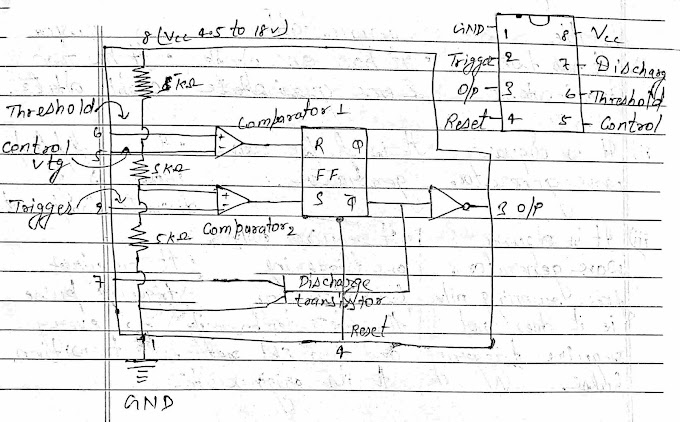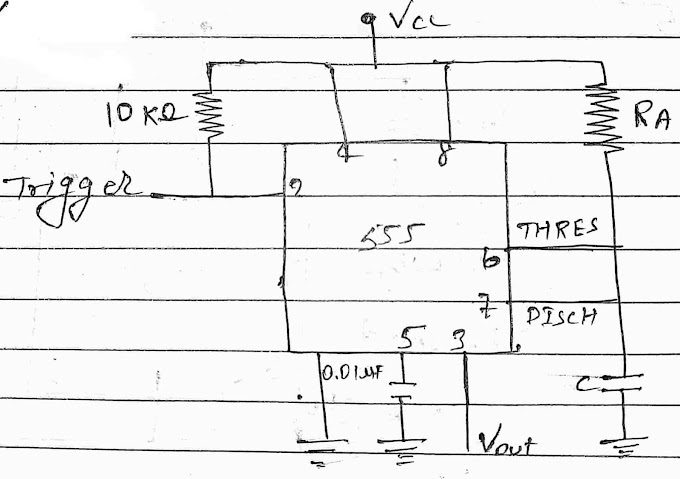Astable multivibrator using transistor:-
A stable multivibrator has two stage but it is not stable in any of them as it remains in one state for some time and then change to the other state and switches back after sometime to its original state figure (a) and (c) Shows transistor based astable multivibrator along with the symbol and the shape of the waveform produced in in figure (b) and (d).
One of the transistor conducts at one time. To achieve this ratio Rb/Rc is made less than the hfe of the transistor. When this condition is satisfied one of the transistor will saturated resulting in the cutoff of other transistor.
Transistor T1 is OFF and T2 will turn ON so that output Q is low. Then the base of transistor T1 is below the cut-off point. As the C1 is charged through Rb1 to Vcc with time constant Rb1, as the result after the time of 0.693 Rb1C1, the transistor T1 goes ON while T2 goes OFF and the output Q goes high. Now the base of the transistor T2 is below cutting point. As a result the voltage increases towards Vcc through Rb2 which charges the capacitor C2 with a time constant Rb2C2 and after a time 0.693 Rb2c2 T1 goes OFF and T2 goes ON and output is low again.
Hence the time period for the pulse is given as,
T=T1+T2
=0.693(RB2C2+RB1C1)
The frequency of oscillator
F=1/T = 1/0.693(RB2C2+RB1C1)
F = 1.44/(RB2C2+RB1C1)
If RB1 =RB2 =R , C1=C2=C ,then
F = 1.44/2RC
= 0.72/RC






1 Comments
Very good
ReplyDelete